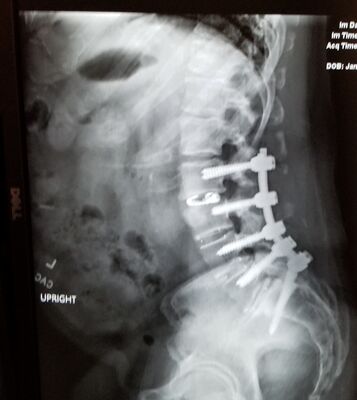DNG or Raw
Feb 24, 2014 09:49:20 #
brucewells wrote:
Well, I'll throw in my 2 cents. DNG is a raw forma... (show quote)
Ahh, now that could explain a few things. So my next question is: If all of the data (including edits) is stored in the DNG file, does this mean that you could perform destructive edits to the DNG file? If so, why is this preferable to having edits as a sidecar so that the original image cannot be physically altered?
Feb 24, 2014 09:58:53 #
rook2c4 wrote:
For sure. I don't know why one would want to convert without doing at least some basic processing. If I ever were in such a hurry that I didn't have time to process my RAW images, I'd simply shoot JGS's instead.
OK, now that I understand. Myself, I currently save both RAW and JPG for those times I just want a quick image to share or pass around.
Feb 24, 2014 10:21:10 #
Picdude wrote:
This is the second thread I've seen today about converting RAW to another format. But what has not been mentioned in either thread is WHY are you wanting to convert? If it is to save an image after processing, that's one thing. But I really can't see a good reason to "convert" a RAW file to DNG, TIFF or anything else just for the sake of converting. What are you hoping to gain?
Good point. I never convert raw to TIFF unless I'm editing. If I don't edit, then it stays raw or in many cases gets deleted. Since I shoot RAW+JPEG, often times the JPEG is the one I edit and keep (depending on the image and desired results).
I guess my point was that I don't trust the Camera MFGs to support their proprietary raw format well into the future. I see them encouraging us to get the latest and greatest. Like Microsoft and Windows, their support does not extend indefinitely. After all, these companies are in business to make money. Im a very big proponent of standards, and Im willing to sacrifice something to develop/keep one.
Feb 24, 2014 10:31:57 #
mdorn wrote:
Good point. I never convert raw to TIFF unless I'm... (show quote)
Why do you shoot RAW at all? With your workflow, wouldn't it be more simple to just shoot JPEG? Less unused files and a lot less deleting.
Feb 24, 2014 10:38:46 #
Rongnongno wrote:
Use 16bit color conversion. DNG defaults to 8 bits. You would lose trillions of possible shade of colors.
Rongnongno: Can you tell me where in LR5 I would find the setting to ensure I'm converting at 16 bits instead of 8? Thanks.
Bill
Feb 24, 2014 10:43:54 #
DickW wrote:
Am brand new to raw. Shooting Nikon so files are in NEF format. After reading several items here and elsewhere, am leaning towards converting to DNG. Is there any downside to doing so? Does it make a difference whether I covert in Lightroom or use a dedicated converter? Which one?
Thanks,
dick
Thanks,
dick
Read these three articles:
http://lightroomkillertips.com/?p=1881
http://www.peachpit.com/articles/article.aspx?p=1317820&seqNum=6
http://news.cnet.com/8301-30685_3-57371809-264/adobe-offering-new-reasons-to-get-dng-religion/
You will get many responses, but personally, I don't change to DNG format. If the time comes when NEF files are no longer supported by whomsoever, I can always convert to DNG, or whatever open source format is in use. Lightroom gives you the option to import RAW images as DNG if you so choose.
Feb 24, 2014 11:19:35 #
DickW wrote:
This may be a stupid question based on my lack of knowledge/experience, but it sounds like several of you are suggesting TIFF as an output format after processing the raw file in Lightroom...is that right??
TIFF has been around for nearly 20 years. DNG... What? 3-5 years.
DNG has not matured into a standard, and while considered non proprietary (well, adobe's own non propriatary) is still NOT a standard.
Don't know this about DNG... but TIFF:
1) retains high bit depth-
2) retains ability to return to layers on future edits
3) Can be Lossless (no compression)
Reason for saying "can be" on lossless, there are differing proprietary versions of TIFF that can be lossless at your discretion. Some of these CAN be compressed (lossy).
TIFF has settled down to limited variations over the years, but as short ago as fifteen years ago, I counted a number of TIFF proprietary formats in the software market. Have not done so in some time, but suspect it's somewhat less a number, and although regarded/referred to simply as TIFF, which stands for Tagged Information File Format, it bears to know that it was once highly variable format.
OTOH, I agree with those who wonder why anyone wants to convert to another format, when RAW makes the most sense, until you edit. Save edited files in TIFF (or DNG if you must)
It's kind of re-inventing the wheel.
As long as a means to open your RAW files continues to exist, why not archive the file with the most information in it.
Remember the real rule of conversion. If the file is smaller as a result, very likely some data has been thrown out to create that smaller size.
Saving storage space is at the cost of data loss, and storage memory is cheap.
When I started consulting on computers, we were building computers with hard drives of 10-12 Megabytes capacity (Yes I said Megabytes, not Gigabytes of capacity). Those hard drives cost between $450 and $500. The average computer had 2-4 Mb of RAM...not Gb. That was 1992
Feb 24, 2014 12:00:44 #
Some excellent points. DNG is not proprietary to Adobe although they developed it. In fact, both Pentax and Leica have the option of shooting in their native proprietary format or in DNG (which I always choose) right in the camera. There are also viewers available for Windows computers that permit seeing the images directly in file viewers or "Libraries". Such DNG images are not defaulted to 8-bit.
As a LR user, I appreciate the fact that any editing information is not applied to the Raw image, but is carried in the metadata as a set of instructions rather than a sidecar file. I am not sure I understand the impetus to convert to TIFF unless it is a requirement of a customer or printing service. The files are huge, and I would certainly not do so until I was finished manipulating them in whatever post software was being used.
As a LR user, I appreciate the fact that any editing information is not applied to the Raw image, but is carried in the metadata as a set of instructions rather than a sidecar file. I am not sure I understand the impetus to convert to TIFF unless it is a requirement of a customer or printing service. The files are huge, and I would certainly not do so until I was finished manipulating them in whatever post software was being used.
Feb 24, 2014 12:17:48 #
lsimpkins wrote:
I am not sure I understand the impetus to convert to TIFF unless it is a requirement of a customer or printing service. The files are huge, and I would certainly not do so until I was finished manipulating them in whatever post software was being used.
There are limitations to the processing that can be carried out in the RAW editor. Exporting to a standard image editor (as TIFF, JPEG, etc.) allows for greater editing options. For example, layer manipulation, applying filters, and localized edits - such as dodging and burning.
Feb 24, 2014 12:28:14 #
Picdude wrote:
Ahh, now that could explain a few things. So my next question is: If all of the data (including edits) is stored in the DNG file, does this mean that you could perform destructive edits to the DNG file? If so, why is this preferable to having edits as a sidecar so that the original image cannot be physically altered?
I may not understand your question, but I find it preferable from the simple fact that I don't have twice as many files to keep up with. In Lightroom, at any time, I can click the 'Reset' button and the image returns to the original image, without any edits. So, storing the edits in the DNG do not constitute destructive editing. If I want to share the image, I'll export it as a JPG and share after the edits are complete. But, let's say I want to do something artistic with the image in Photoshop. I will simply 'Edit In', choose Photoshop and Lightroom will ask if I want to edit the original image, or the image with the Lightroom edits. Whatever I choose here makes no difference, for once the Photoshop editing is complete, and I save it back to Lightroom (I usually save them back to Lightroom as a PSD file to preserve any layers I may have created), it becomes another distinct image in Lightroom.
Another thing I do sometime is make a virtual copy of the original (whether it's been edited or not) then edit the copy. For example, there are times I have the color photo edited, but I want to make a B&W copy of the same image. After making the virtual copy, I can 'reset' the copy back to the original image and develop as a B&W image.
I hope this addresses your question, but suffice it to say, the original is always available.
Feb 24, 2014 12:51:01 #
rook2c4 wrote:
There are limitations to the processing that can be carried out in the RAW editor. Exporting to a standard image editor (as TIFF, JPEG, etc.) allows for greater editing options. For example, layer manipulation, applying filters, and localized edits - such as dodging and burning.
I believe I would be using a PSD while in Elements or PS and still not have a need for TIFF unless going to the outside world.
Feb 24, 2014 12:55:44 #
mdorn wrote:
Good point. I never convert raw to TIFF unless I'm... (show quote)
"........I guess my point was that I don't trust the Camera MFGs to support their proprietary raw format well into the future"
:thumbup: :thumbup: :thumbup: :thumbup: :thumbup:
Feb 24, 2014 14:39:57 #
amehta
Loc: Boston
Picdude wrote:
Ahh, now that could explain a few things. So my next question is: If all of the data (including edits) is stored in the DNG file, does this mean that you could perform destructive edits to the DNG file? If so, why is this preferable to having edits as a sidecar so that the original image cannot be physically altered?
The edit instruction set is saved inside the "regular" DNG file, but the sensor data is not ever modified.
Feb 24, 2014 14:48:23 #
billjohdoittoday wrote:
Rongnongno: Can you tell me where in LR5 I would find the setting to ensure I'm converting at 16 bits instead of 8? Thanks.
Bill
Bill
Bill I'm new to PP too as I've been trying to learn Lightroom 5, but I just found the answer to your question. In Lightroom go to Edit, then down to Preferences, then a window will open up click on External Settings. I'm sure there's a shorter way to do it but that works for me.
Now I can go through the rest of the day feeling like I've accomplished something.
Ted
Feb 24, 2014 15:12:42 #
rook2c4 wrote:
Why do you shoot RAW at all? With your workflow, wouldn't it be more simple to just shoot JPEG? Less unused files and a lot less deleting.
I shoot raw because I can. More simple to shoot just JPEG? Not really. My camera has a setting, and I don't even realize I'm shooting both. The deleting part is pretty hard on my finger, but I manage. :-)
If you want to reply, then register here. Registration is free and your account is created instantly, so you can post right away.







